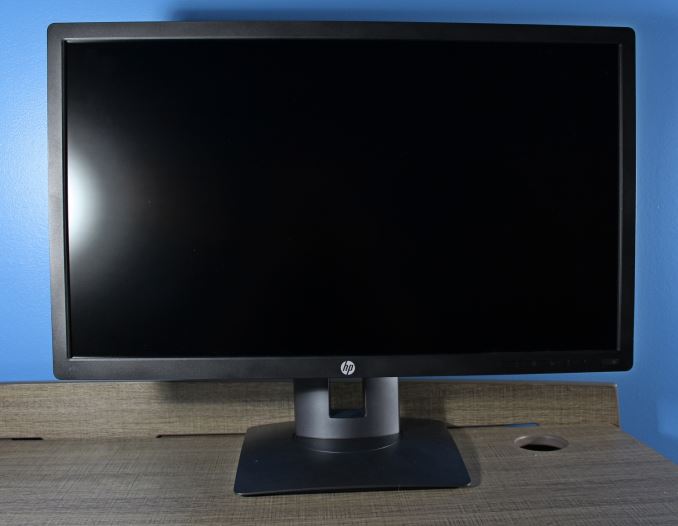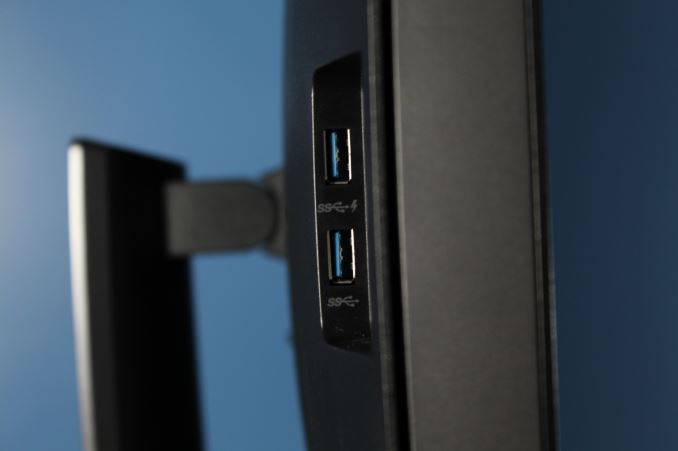HP Z27q Monitor Review: Aiming For More Pixels
by Brett Howse on December 22, 2015 8:00 AM ESTFinal Words
When HP entered the 5K market with the Z27q, the only real competition was the 27-inch Dell 5K display, but it cost close to $2000. HP came into the market with the same display dimensions and resolution, but undercut Dell by almost $800. $1200 for a display is still a lot of money, but if you are someone that needs high resolution, the HP Z27q needs to be considered.
The overall accuracy of the display is great, especially in the AdobeRGB color mode. sRGB does need some calibration of the grayscale and white point to make it practically perfect, but the calibration of the LUT at the factory by HP is quite good resulting in a decent out of the box experience. The one real issue with this display is that the backlight is uneven, dropping as high as 20% from the center when measured at the top left corner. This is pretty much the same issue that we found with the Z27x, and it would not be surprising to find that both monitors are designed similarly. It is the one blemish on an otherwise great performing display.
People looking at 5K displays have to factor in that it takes a lot of GPU power to drive these. You can’t even drive the display with a single cable; instead you have to use two DisplayPort 1.2 ports and cables to achieve the 5120x2880 resolution. This means that the display leverages MST, and while I’ve heard of people having issues with this, I did not have any issues with MST driving this display with an AMD FirePro card in Windows 10. It will still be a while before we have the DisplayPort 1.3 capabilities to drive this with just a single cable.
The construction of the HP Z27q is not going to win any style awards, but it is functional and for most people, a black monitor is all that is needed. The stand is very easy to use though, with lots of options to tilt -5° to +22°, and the swivel is plus or minus 45°.
Due to the nature of the display, input lag was not able to be tested, since the tester used is HDMI and 1080p. In my time with it, there was no noticable lag at the native resolution.
There are not too many people that need almost 15 million pixels, but there are certainly use cases for a display like this. Editing 4K video is an obvious use case, since you can have the entire 4K video in a pixel perfect window, with enough room for toolbars as well. The gamut is a long way from the Z27x offering from HP, but that is only a 2560x1440 panel. Just like the Z27x the one glaring issue is the uniformity. If HP can get on top of this, they will likely have the display to beat, especially at this price.













92 Comments
View All Comments
petteyg359 - Tuesday, December 22, 2015 - link
Why use software to do what hardware should be doing by giving me multiple screens?DanNeely - Tuesday, December 22, 2015 - link
Has there been any news about LGs 31.5" 5k panel (same height as 30" 1600p models) since the initial announcement in January. At that time, they were expecting panel production in Q3 of this year and initial retail availability around now, but I haven't seen anything since then.http://linustechtips.com/main/topic/289516-lgdispl...
BrokenCrayons - Tuesday, December 22, 2015 - link
It's pretty, but also pretty impractical. I just got an 18.5 inch replacement for my 15 inch monitor and it was hard to find one in that size at 1366x768 which is annoying since high resolutions just require scaling and end up only able to display the same amount of information at a cost of additional computation making the entire higher resolution thing a bit of an exercise in pointlessness. But aside from that, 27 inch screens are far too large for personal computing at a desk, forcing the user to push the screen away from their eyes in order to make effective use of it, once again defeating the purpose of scaling up the display. I'm already experiencing this moving up to an 18.5 inch screen. It's uncomfortable to use at the same distance so it had to move further away until it appears effectively the same size as my previous screen. The larger panel is therefore something of a waste as it's also too small to effectively serve as a conference room display. Overall, I'd say it's a very niche market and highly impractical screen. I'd be surprised if it makes many sales.Spunjji - Tuesday, December 22, 2015 - link
You're not on the side of the average consumer with your comments there, but this is definitely intended to be a niche product.Scaling is still useful, too. Text at the same size but rendered with more pixels is a lot more legible and pictures treated in the same manner look much more natural.
zodiacfml - Thursday, December 24, 2015 - link
5K is essentially for photo or high resolution video work. I have 15inch notebook with 1366x768 resolution and the pixels are pretty big and obvious. I can see it right now in this blue border of this Post your comment box. I have seen a 5K Mac display at close distance and the it reminds me of looking at a smartphone display in terms of PPI/sharpness.chaos215bar2 - Tuesday, December 22, 2015 - link
Is there a technical reason we aren't seeing the 5k equivalent of 30" monitors (5120x3200)? 27" 5k is nice, but this is a computer monitor, not a TV. Until monitors start seriously going beyond 27" (while maintaining pixel density), 16:9 really isn't an ideal aspect ratio for most work.DanNeely - Tuesday, December 22, 2015 - link
16:10 is dead, just as 4:3 died years prior. Being the same resolution as TVs certainly helped; that a 16:9 screen took less material and was therefor cheaper than a 16:10 one with the same diagonal size was probably the final nail in the coffin.theduckofdeath - Wednesday, December 23, 2015 - link
Agreed, 19:10 is for people who still full-screen all their apps, I think. 16:9 is more practical for side by side windows.theduckofdeath - Wednesday, December 23, 2015 - link
-3:p
okashira - Tuesday, December 22, 2015 - link
16 watts in standby? What a POS.